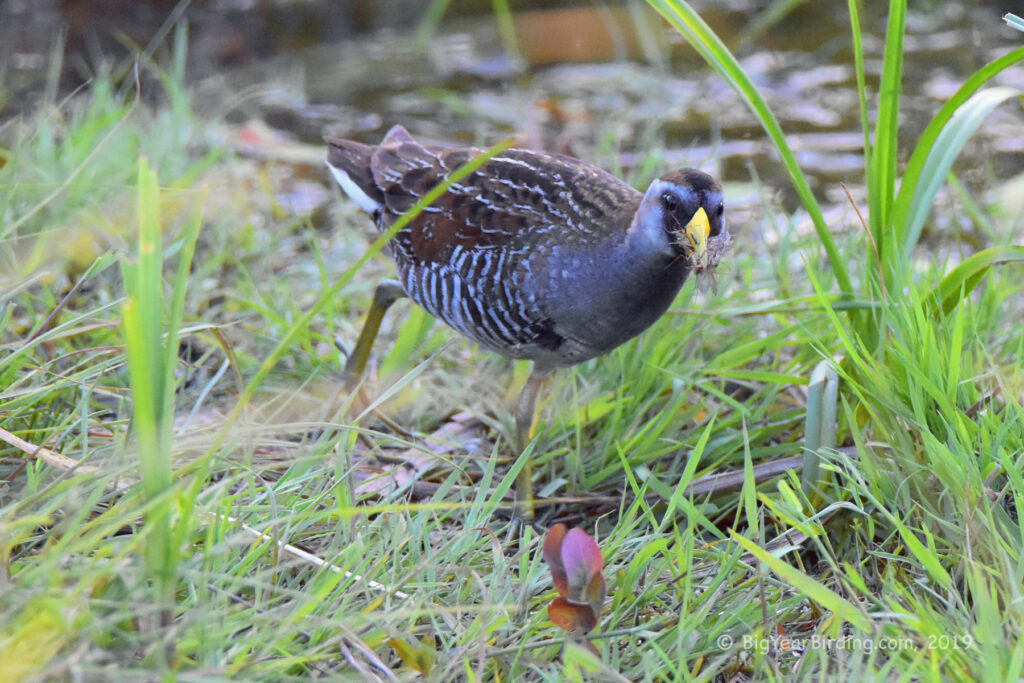
The Sora is a small, secretive bird that belongs to the family of Rails. It has a length of 7.5-8.5 inches and a wingspan of 16 inches. The bird weighs between 2.2-3.7 ounces, making it one of the lightest members of the Rail family. It has a short, stubby bill that is slightly curved downwards, which is well-suited for its omnivorous diet.
The Sora is characterized by its unique plumage. It has a dark, slate-gray body with a contrasting white undertail coverts. Its face is marked with a distinctive yellow bill and red eyes. The bird’s wings are short and rounded, which enables it to fly quickly through dense vegetation. The Sora also has a distinctive call, which is a series of descending whistles that can be heard during the breeding season.
The Sora is a migratory bird that breeds across North America and winters in the southern United States, Central America, and the Caribbean. During the breeding season, the bird can be found in freshwater marshes, swamps, and other wetland habitats with dense vegetation. In the winter, the bird moves to more open habitats, such as flooded fields, mudflats, and marshes.

The Sora is a shy and elusive bird, and it is often difficult to spot. However, it can be observed by listening for its distinctive call or by searching for its habitat in wetlands. The best time to observe the Sora is during the breeding season, which occurs from March to September in most parts of North America.
Despite its small size and unassuming nature, the Sora plays an important role in the ecosystem of wetlands. As an omnivore, it feeds on a variety of insects, seeds, and small aquatic animals, which helps to maintain the delicate balance of these habitats. The bird is also an important food source for larger predators, such as hawks, owls, and snakes.
